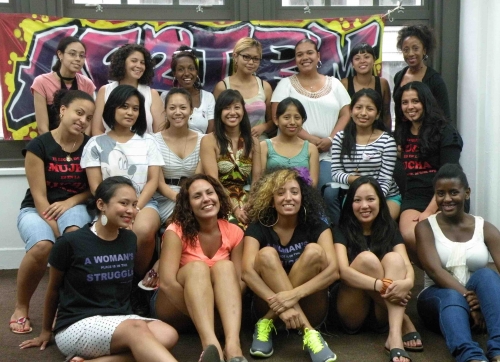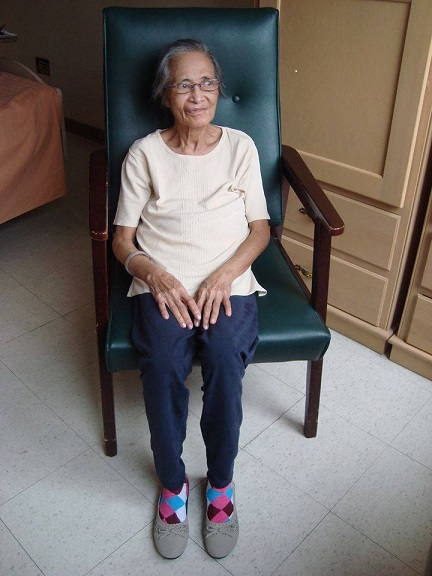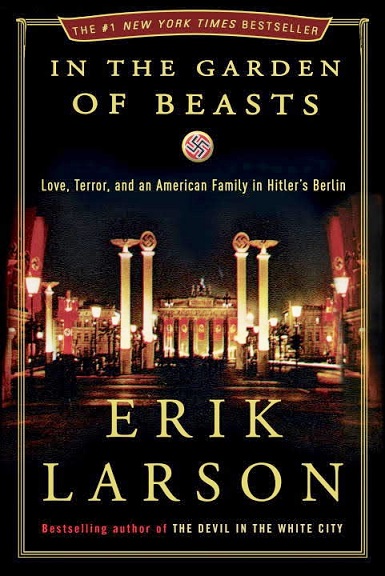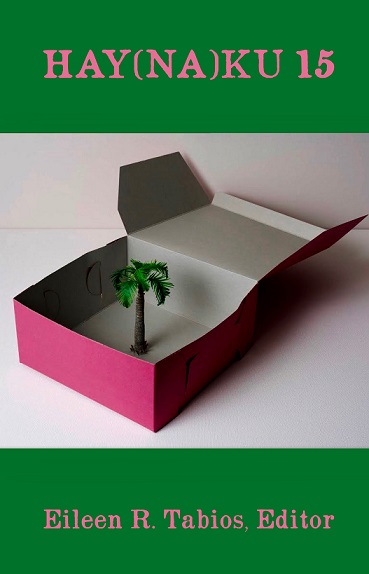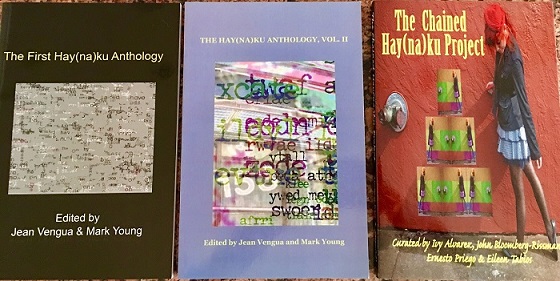The poetry form ‘Hay(na)ku’ on its 15th birthday
By Eileen R. Tabios
In 2018, the “hay(na)ku”, a tercet-based poetic form, will celebrate its 15th year anniversary. While I created the form, it received its name from Vince Gotera who had co-founded (with Nick Carbo) the Flips Listserve where I introduced the form (the Listserve was for those interested in Filipino literature). The hay(na)ku’s tercet presents the first line as one word, the second line as two words, and the third line as three words.
Here is one of my favorite hay(na)ku, as written by Filipino poet Catalina Cariaga:
Onion
Just eaten
Smell my breath
Here’s one I wrote:
… blueness
of sky—
I am breathing
The hay(na)ku’s “1, 2, 3” aspect was partly inspired by the Filipino nursery rhyme: “isa, dalawa, tatlo, ang tatay mo’y kalbo.” The rhyme translates into English as “one two three, your dad is bald.” Reflecting its diasporic nature, the hay(na)ku also was inspired by a U.S.-American author’s novel, Richard Brautigan’s “The Hawkline Monster,” specifically the character Cameron: “Cameron was a counter. He vomited nineteen times to San Francisco. He liked to count everything.” My amusement over this counting character led me to keep a “counting journal” where I tried to count everything I noticed in my life—I could maintain the attempt for only five months but the experiment enabled me to birth the hay(na)ku’s counting-based form.
After its 2003 release, the hay(na)ku quickly spread, with poets (and visual artists) from around the world engaging with the form. Fairly quickly, the form appeared in literary journals, poetry collections and anthologies (including Best American Poetry) as well as generated four hay(na)ku-specific anthologies. (More information on the hay(na)ku is available at https://eileenrtabios.com/haynaku/ )
The hay(na)ku’s popularity is partly due to its accessibility. It’s been used to encourage kids to write poetry, addressed in a “Poetry for the People” course at U.C. Berkeley, and even used in writing workshops at a senior citizens center. Yet it’s deceptively simple: Of the form, Filipino poet Ivy Alvarez notes, “It is a beautiful glass container for holding the present moment: spare and elegant, it also has an incredible capacity for breadth. The hay(na)ku form is a wonderful and witty evolution that triggers inventiveness in those who use it.”
Nonetheless, I and some other poets interested in the form were surprised to realize 2018 is the hay(na)ku’s 15th anniversary (“Many avant-garde creations don’t last that long!” observed Finnish poet Jukka-Pekka Kervinen who has published many poets who have written hay(na)ku.) I didn’t realize that some poets never stopped writing in the form, and new poets keep coming to it! Thus, with 2018, the San Francisco Public Library’s Filipino American Center decided to host a summer exhibition of hay(na)ku poems (a smaller exhibit will take place in December at Saint Helena Public Library, my hometown library). The exhibition is coordinated by Filipino American Center Librarian Abraham Ignacio, Jr. Joined by Philippine American Writers & Artists (PAWA) as sponsor, SFPL also will host the book launch on Sept. 8, 2018 for a new anthology I’m editing, HAY(NA)KU 15 (jointly published by Meritage Press and Paloma Press).
I recently compiled the HAY(NA)KU 15 manuscript after closing out a global submission period. The anthology will feature the hay(na)ku poems of about 127 poets and translators who come from 13 countries: Australia, Canada, England, Finland, India, Luxembourg, Mexico, New Zealand, Philippines, Poland, Scotland, Thailand, and United States. HAY(NA)KU 15 also presents poems in eight languages: English, Filipino, Finnish, Hindi, Polish, Portuguese, Romanian, and Spanish.
I’ve been both moved and delighted by the interest in the hay(na)ku. I recently lectured on it at Sonoma State University where I expressed the hope that by having non-Filipino poets write in a Filipino-named form, they and their readers then would be encouraged or become curious to learn more about Filipino culture.
I also think the hay(na)ku is popular because I’ve been open to others creating variations on the basic tercet form—an extension of my “kapwa” poetics to be open to others and their ideas. Since the form’s inauguration in 2003, numerous variations have been created (a list of variations is at https://eileenrtabios.com/haynaku/haynaku-variations/ ), including
—“reverse hay(na)ku” where the word-per-line count for the tercet is 3, 2, 1 instead of 1, 2, 3;
—“chained hay(na)ku sequence” where the poem contains more than one tercet “chained” together;
—“abecedarian hay(na)ku” where each word begins with each succeeding letter in the English alphabet; and
—“sci(na)ku” which is hay(na)ku with a speculative element.
I hope readers will be encouraged to check out HAY(NA)KU 15 and other books or websites that present the form. That a “Filipino diasporic poetic form” has been accepted by poets of different nationalities and around the world warrants celebration and pride in our culture, and not just because 2018 is its 15th birthday. As well, I hope readers will try their hand at the hay(na)ku. As a student at Sonoma State University said in writing her first hay(na)ku:
Poetry!
It’s short.
Only 6 words.
© The FilAm 2018


